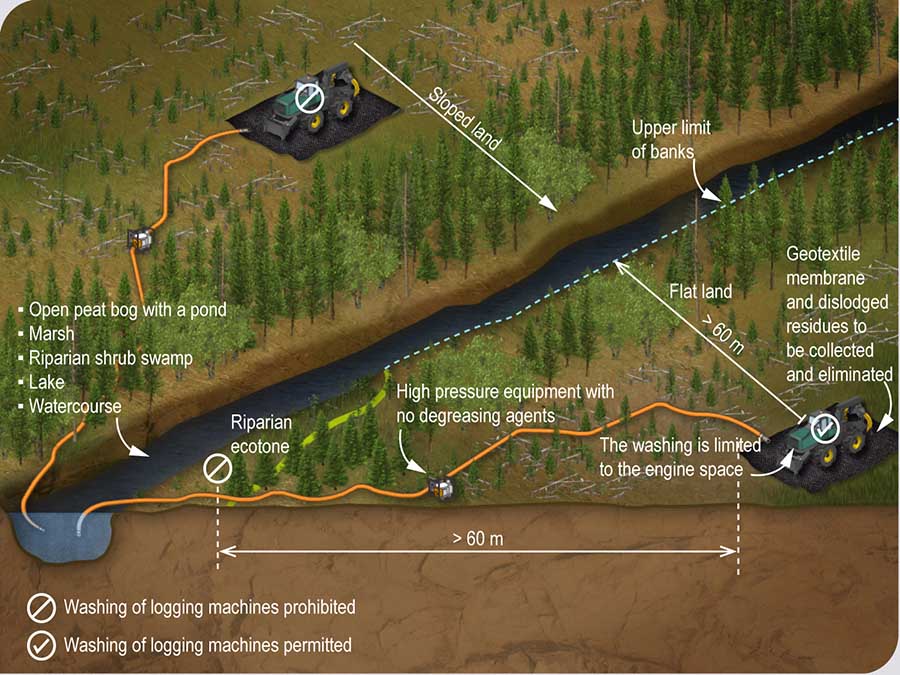Chapter III – Protection of aquatic environments, riparian areas, wetlands and soils
Division IV – Sylvicultural drainage, washing water, contaminants, earth and tree debris
§2. Discharge, recovery and treatment of washing water
Section 39
Water for washing logging machines may be discharged in the forest only if all the following conditions are met:
- washing is not done at the top of a slope leading directly to an open peat bog, a marsh, a swamp, a lake or a watercourse;
- the washing is limited to the engine space;
- washing is done using high pressure equipment and without degreasing agents;
- a geotextile membrane is placed under the logging machine to collect the residues dislodged by washing;
- the geotextile membrane and dislodged residues must be recovered and disposed of in accordance with the Regulation respecting hazardous materials
 (chapter Q-2, r. 32).
(chapter Q-2, r. 32). 
1
Objectives
- To preserve the integrity of an aquatic, wetland or riparian environment
- To avoid contaminating the forest
Additional information
Logging machines must not be washed at the top of a continuous slope leading directly to an open peat bog, a marsh, a swamp, a lake or a watercourse. Washing must take place further away, at a place where the land no longer slopes towards these environments. This will ensure that the water will be evacuated towards an area of vegetation, well away from the other environments.
Figure 38 Rules governing the washing of logging machines
Despite the first paragraph, washing water may be discharged in the forest provided that it is treated on the site and that it does not contain more than 30 mg/l of suspended matter and 15 mg/l of hydrocarbons (C10-C50). ![]()
2
Objectives
- To preserve the integrity of an aquatic, wetland or riparian environment
- To avoid contaminating the forest
Explanations
Water for washing logging machines may be discharged in the forest if all the conditions set out in subparagraphs 1 to 5 of the first paragraph of this section are met. However, if all the conditions cannot be met, but the washing water is treated on the site and does not contain more than 30 mg/l of suspended matter and 15 mg/l of hydrocarbons (C10-C50), it may still be discharged in the forest.
Residues from washing and water treatment on the site must be recovered and disposed of in accordance with applicable laws and regulations.![]()
3
Objective
- To avoid contaminating the forest

